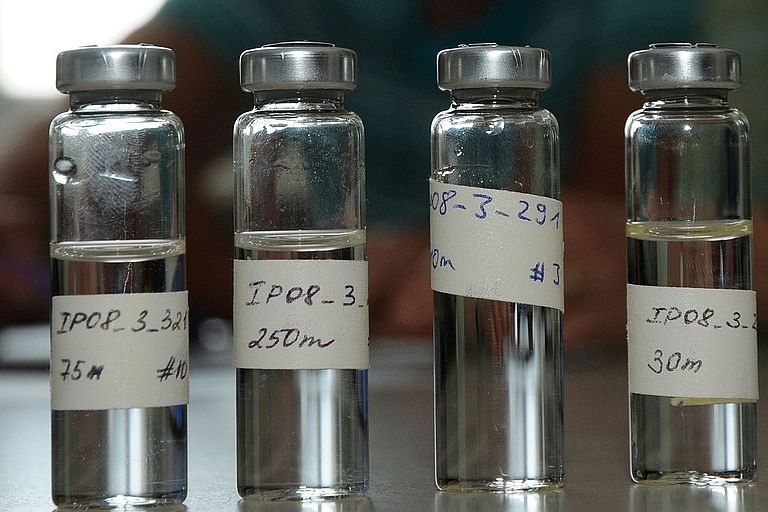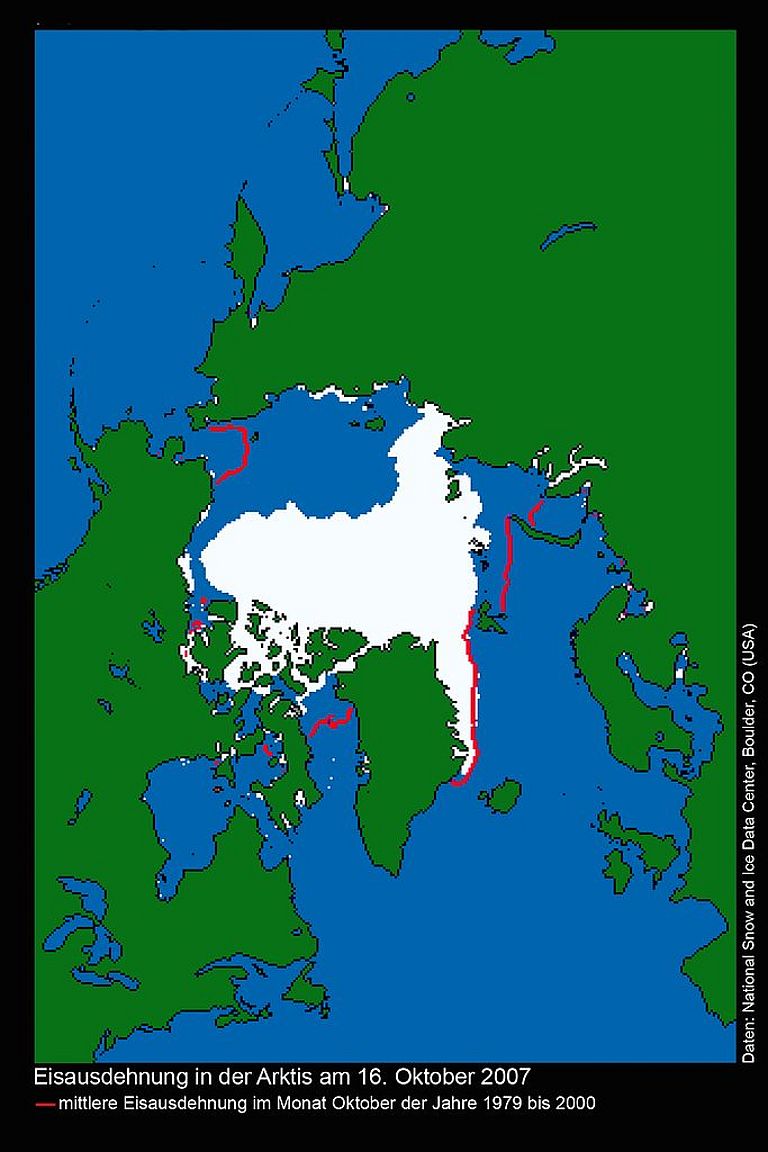Arctic waters on the verge of changing?
October 5, 2010/Kiel. In cooperation with their German and Russian partners from Bremerhaven, Trier, and St. Petersburg, scientists from the Leibniz Institute of Marine Sciences (IFM-GEOMAR), Kiel, have found evidence of possibly dramatic changes in the stratification of the Arctic Ocean during their studies on ice formation in the Laptev Sea (Siberia). The results of their research are published in the international Journal of Geophysical Research (JGR).
Satellite images prove the fact that the ice cover in the Arctic in summer has decreased by 40% during the past 30 years. The processes responsible for this decrease as well as possible consequences, however, are little understood. The joint Russian-German project „Laptev Sea Polynya“ aims to ascertain the causes and consequences of climate change and its essential mechanisms in the Arctic. Now the project scientists revealed a changed water mass distribution in the Siberian Laptev Sea which might be of consequence for ice formation in the whole Arctic.
The project focuses on polynyas, open water areas between solid coastal ice and drift sea-ice of the open ocean. During winter ice forms in these polynyas and which is subsequently exported into the Arctic Ocean. However, it is extremely difficult to observe this process in situ due to the severe winter conditions in this region. To overcome these problems, the scientists make use of a particular physical property of seawater: seawater consists of different variants of the water molecule, so-called isotopes. When the water freezes, the isotope ratio changes and these changes can be traced even several months later. In summer, when the Siberian coastal waters are ice-free, water samples can be taken relatively easily. „Thus, it is possible to reveal how much ice was formed in previous winters,“ says Dr. Dorothea Bauch from the IFM-GEOMAR, first author of the current JGR paper.
Although ice forms at the ocean surface, the respective isotopic traces were most often found in water samples from the bottom water of the Laptev Sea. „This fact can easily be explained,“ says Dr. Bauch. „When the sea water freezes at the surface, the salt is released from the ice. The sea water remaining after ice formation, therefore, is rather salty and denser than the surrounding water mass, and sinks to the seafloor.“ However, measurements, carried out in 2007 show a completely different picture: the isotopic traces were found close to the water surface. „These findings contradict our conception of the stratification and distribution of water masses in this region“, explains Dr. Bauch.
The authors state that a change in the mechanisms which contribute to ice formation in winter might explain the usual observations,. In 2007 the Arctic Ocean experienced the lowest ice coverage on record. Dr. Bauch supposes that the remarkable distribution of isotopic traces is related to these extreme summer conditions.
If this summer was not a singular event, but points to a long-term trend, this would mean that larger amounts of saltier water are appearing in the surface layers of the Arctic Ocean. This would result in the surface waters being less effectively isolated by their lower density gradient against the relatively warm deep waters advected from the Atlantic Ocean. „Sea water freezes at temperatures lower than -1.8°C. However Atlantic water masses have a temperature of slightly above 0°C when entering the Arctic Ocean at greater depths. These warmer water masses could accelerate the decrease in the ice cover if the interaction between the cold surface water layer and Atlantic waters would be enhanced“, says Dr. Bauch. The data available so far, is not sufficient to confirm a long-term trend. ”Thus, we do not know enough about the mechanisms of ice formation and water distribution in the Arctic“, Bauch summarizes.
Additional data are expected from the recently finished TRANSDRIFT XVII expedition to the Russian Laptev Sea within the framework of the „Laptev Sea Polynya“ project with Torben Klagge (IFM-GEOMAR) as the scientist in charge. „Data coverage will nevertheless remain patchy due to the severe climate conditions and the remoteness of the area”, explains Dr. Heidemarie Kassens, project leader from the IFM-GEOMAR. “We are still at the beginning of understanding Arctic environmental processes. Further research is of particular importance as the Arctic is a key area for investigating climate change“, Kassens concludes.
Original publication:
Bauch, D., J. Hölemann, S. Willmes, M. Groeger, A. Novikhin, A. Nikulina, H. Kassens, and L. Timokhov (2010), Changes in distribution of brine waters on the Laptev Sea shelf in 2007, J. Geophys. Res., doi:10.1029/2010JC006249.
Background information:
The joint Russian-German project “Laptev Sea Polynya“ focuses on Arctic front and polynya systems in the Laptev Sea, Siberia, the response of these systems to climate changes, and feedback mechanisms affecting global climate. The project involves multidisciplinary investigations, namely remote sensing, meteorology, oceanography, physics, hydrochemistry, biology, paleoceanography, and climate modelling. It is funded by the German Federal Ministry of Education and Research and the Russian Ministry of Education and Science.
Contacts:
Jan Steffen (Communication & Media), Phone: +49-431 600-2811, presse(at)geomar.de jsteffen(at)ifm-geomar.de




